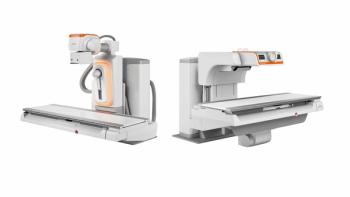
Chest X-ray Isn’t Reliable in Detecting COVID-19 Lung Infections
Images show mainly normal or mildly abnormal findings in patients with confirmed viral infection.
Even though you routinely use chest X-rays to pinpoint lung infections, new research indicates these images aren’t a dependable way for you to identify and diagnose respiratory lung infections caused by COVID-19.
In a study published Tuesday in the
“Providers ordering a chest X-ray in the outpatient setting should be aware that a patient with symptoms of COVID-19 may have a negative chest X-ray and should manage the patient based on their symptoms,” Weinstock said. “Doctors should not be reassured by a negative chest X-ray.”
This is the first study to look at a COVID-19-positive population outside of an inpatient setting. Knowing the efficacy of chest X-ray is critical in ambulatory patients, Weinstock said, because X-ray is the most readily available modality in urgent care centers. It’s these locations where most patients with less severe – but still contagious – disease are likely to seek care.
To determine how effectively X-ray identifies respiratory infection related to COVID-19, the team analyzed 636 X-rays from patients who tested positive for the virus using the reverse transcriptase-polymerase chain reaction (RT-PCR) test. Of the group 363 were men, and 273 were women. They ranged in age from 18 to 90 years with 77.5 percent falling between the ages of 30 and 70.
According to results provided by 12 radiologists, 371 images (58.3 percent) were normal. Of the remaining 265 abnormal cases, radiologists classified 195 as mild disease, 65 as moderate disease, and 5 as severe. This means 89 percent of X-rays from this patient group were categories as normal or only mildly abnormal, Weinstock said.
Within the images, the most predominant descriptive findings were interstitial changes and ground glass opacities – 151 (23.7 percent) and 120 (18.9 percent), respectively. The abnormalities were scattered throughout the lungs with 215 (33.8 percent) in the lower lobe, 133 (20.9 percent) were bilateral, and 154 (24.2 percent) were multi-focal.
The results fall in line with other findings globally, said Matthew Exline, M.D., associate professor of pulmonary, critical care, and sleep medicine at The Ohio State University Wexner Medical Center.
“This study reinforces what we’ve learned from our colleagues outside of the United States that the majority of patients with COVID-19 have mild symptoms and minimal evidence of disease on chest X-ray,” he said. “Hopefully, this will help clinicians decide who would best benefit from hospitalization and any potential new treatments.”
Additional study efforts are underway to follow these patients and determine how their outcomes line up with their chest X-ray results, he said.
Newsletter
Stay at the forefront of radiology with the Diagnostic Imaging newsletter, delivering the latest news, clinical insights, and imaging advancements for today’s radiologists.




























